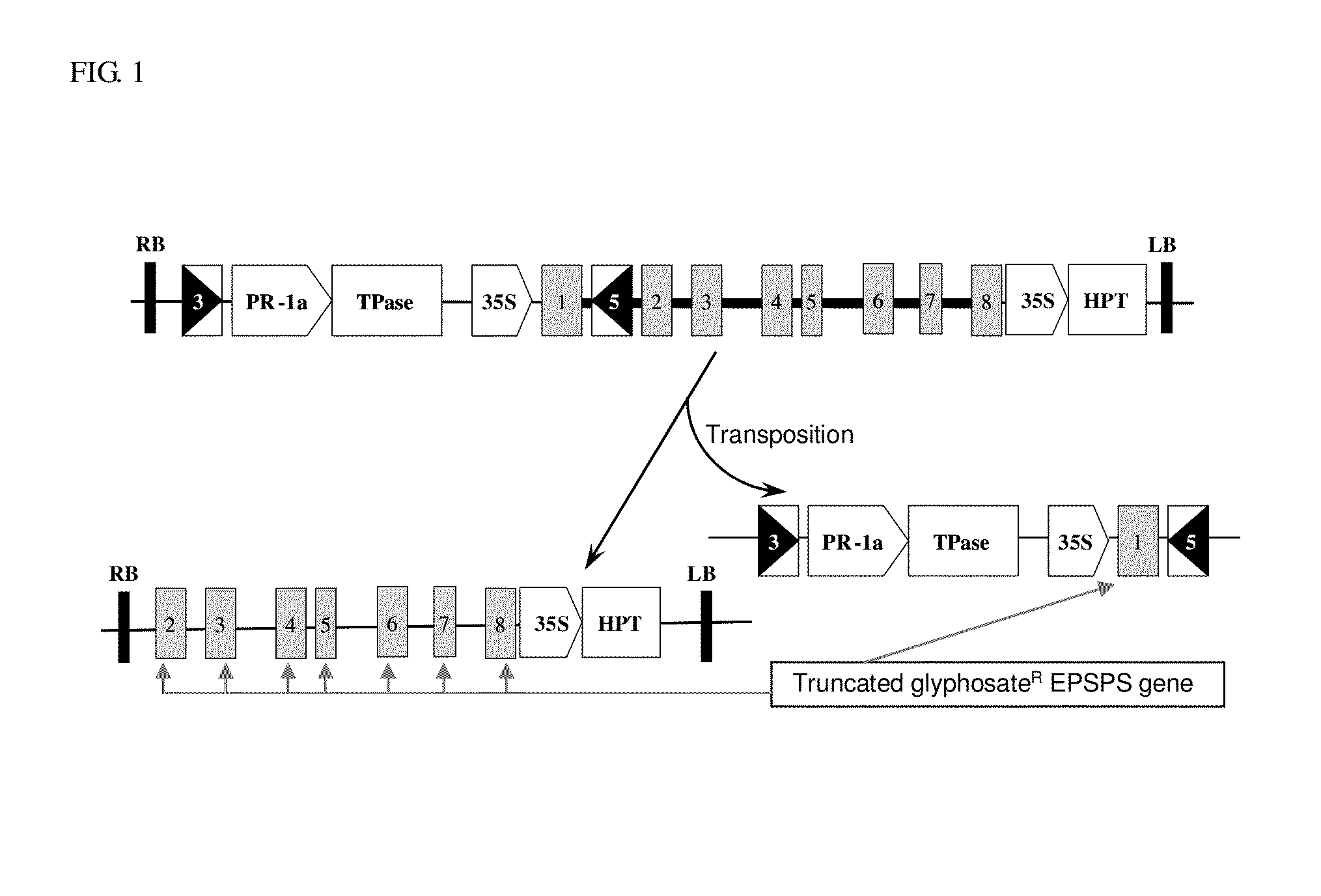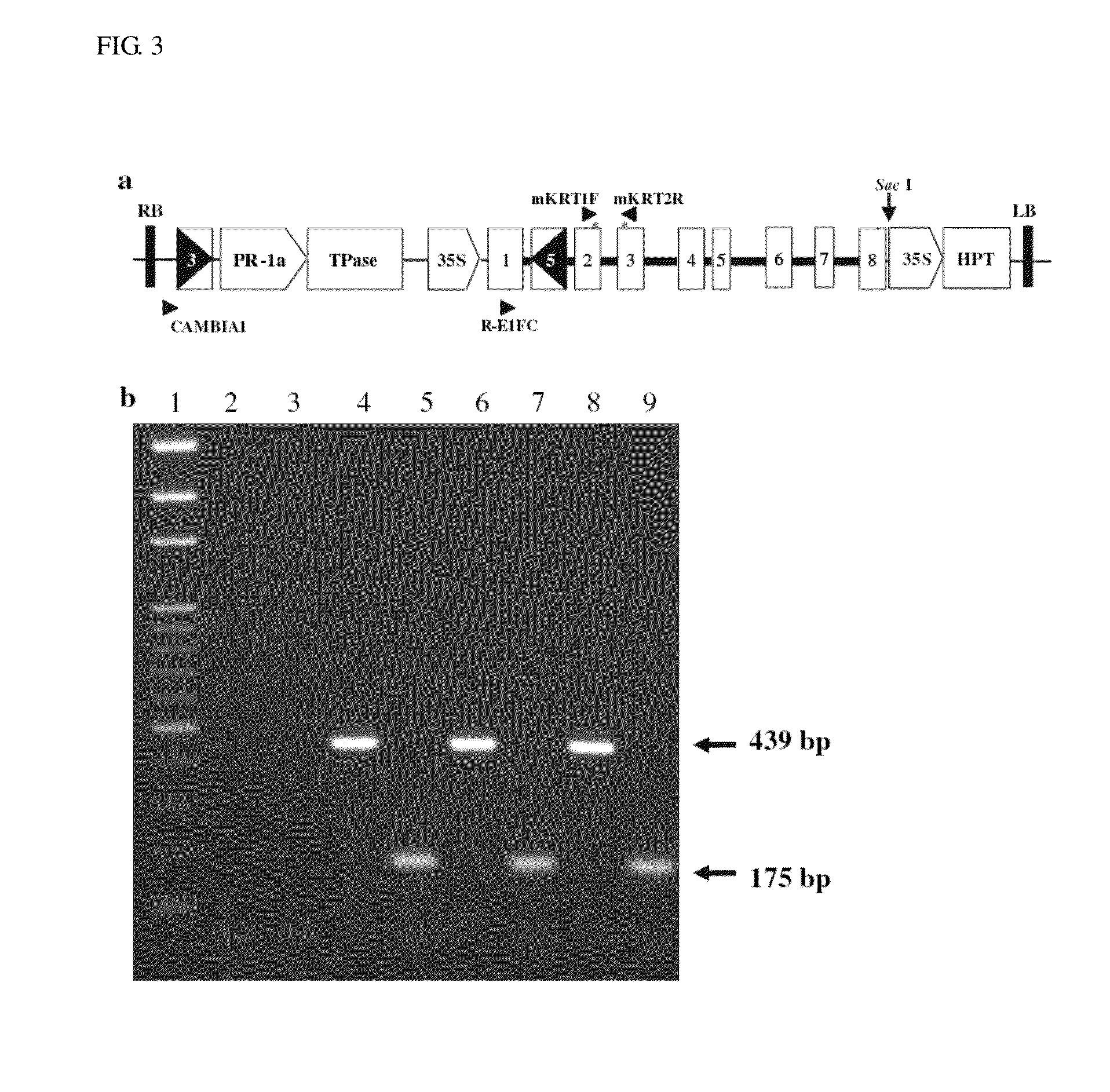Termination of transgene expression via transposon-mediated break
a transgene and transposon technology, applied in the field of gene constructs, can solve the problems of phenotypic aberration, time-consuming work, and less than optimal plant transformation efficiency
- Summary
- Abstract
- Description
- Claims
- Application Information
AI Technical Summary
Problems solved by technology
Method used
Image
Examples
example 1
Construction of the Transposon-Mediated Marker-Off System
[0075]The construction of the inducible transposon system to truncate the marker gene was depicted in FIG. 3a. First, the 5′ end of the Ac element was inserted in the first intron of the rice genomic epsps driven by the CaMV35S promoter, which had been modified to produce a glyphosate-tolerant form of the enzyme. To complete a new transposon, a PR-1a::TPase fusion was flanked by the 3′ end of Ac. The new transposon, KCEH, contains a PR-1a::TPase fusion, a CaMV35S promoter, and the first exon of the modified epsps. The KCEH system (KCEH transposon plus the marker gene) was inserted into the binary vector pCAMBIA 1300, yielding the plasmid pKCEH, which was introduced into the Agrobacterium tumefaciens strain LBA4404 for plant transformation.
Expression of the Modified epsps in Transgenic Rice Plants
[0076]To determine the behavior of the modified epsps in rice, the KCEH construct was transformed into rice, with hygromycin used as ...
example 2
Construction of the One-Time Transpopson System COYA
[0084]The construction of the one-time transposon system COYA is described in FIG. 2. First, the 5′ end of the Ac element, together with a 35S promoter, was inserted into the third intron of the transposase gene, driven by a PR-1a promoter from tobacco. Then, the 3′ end of the Ac element flanking the hygromycin phosphotransferase (HPT) gene was constructed downstream of the transposase gene. Hence, the transposon contained the fourth and fifth exons of the transposase gene and HPT. Furthermore, the COYA element was constructed between the 35S promoter and the LUC gene. In principle, after transposition, LUC could be reactivated and the transposase gene would be truncated. The COYA system was inserted into the binary vector pCAMBIA 2200, yielding the plasmid pCOYA, which was then introduced into rice plants by use of transfection with Agrobacterium tumefaciens strain LBA4404. We used 21 single-copy T-DNA integration transgenic plant...
PUM
| Property | Measurement | Unit |
|---|---|---|
| time | aaaaa | aaaaa |
| morphology | aaaaa | aaaaa |
| herbicide resistance | aaaaa | aaaaa |
Abstract
Description
Claims
Application Information
 Login to View More
Login to View More - R&D
- Intellectual Property
- Life Sciences
- Materials
- Tech Scout
- Unparalleled Data Quality
- Higher Quality Content
- 60% Fewer Hallucinations
Browse by: Latest US Patents, China's latest patents, Technical Efficacy Thesaurus, Application Domain, Technology Topic, Popular Technical Reports.
© 2025 PatSnap. All rights reserved.Legal|Privacy policy|Modern Slavery Act Transparency Statement|Sitemap|About US| Contact US: help@patsnap.com



